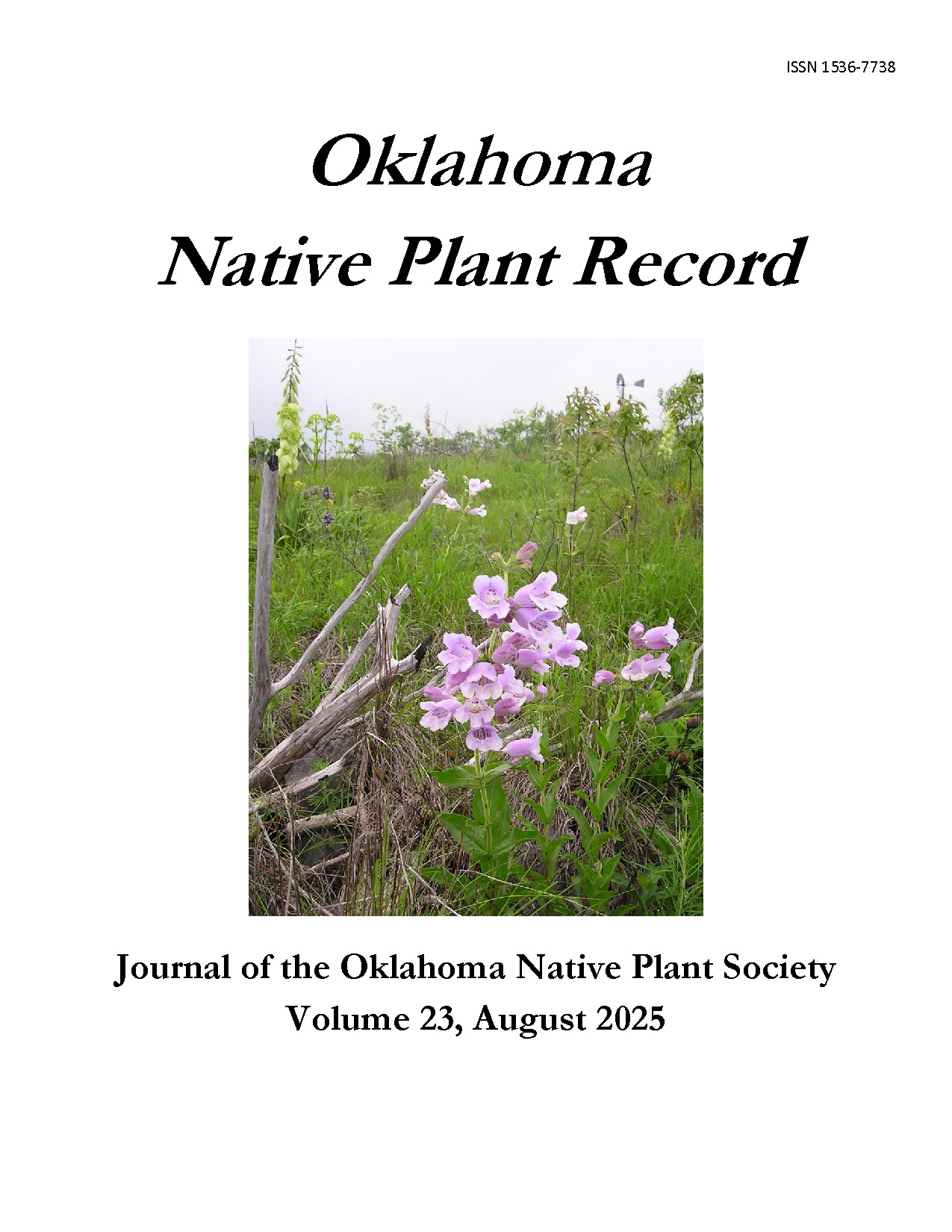The Distributions of Two Invasive Honeysuckle Species (Lonicera maackii and Lonicera japonica) in Eastern Oklahoma
Main Article Content
Abstract
Concerns about spreading non-native invasive plant species have increased in recent decades following their harmful impacts on ecosystems. Their encroachment, aided by survival and reproductive advantages, can negatively impact ecosystems and biodiversity. These effects often lead to larger long-term issues and can be difficult and expensive to manage. Lonicera maackii (Rupr.) Herder and L. japonica Thunb. are invasive honeysuckle species that can outcompete, inhibit, and reduce the populations of native species, thus threatening biodiversity in invaded regions. Both species have formed naturalized populations throughout much of the eastern United States, including Oklahoma. Both species reproduce quickly, grow prolifically, face less environmental resistance, and tolerate a wider range of environmental conditions than most native plant species. This study, based on field surveys and herbarium records, presents new information on the distribution of L. maackii and L. japonica in eastern Oklahoma. Surveys were conducted in parks and public recreation areas of all 47 counties of eastern Oklahoma. By combining herbarium data and field surveys, we found that L. maackii occurs in fewer counties than expected and L. japonica is present in nearly all counties surveyed. The results also revealed a strong positive relationship between the presence of L. maackii and the population size of towns. We also found a weak and non-significant relationship between the occurrence of L. maackii and the number of non-native species in a county.
Article Details

This work is licensed under a Creative Commons Attribution-NonCommercial-ShareAlike 4.0 International License.
Articles (c) The Authors
Journal compilation (c) Oklahoma Native Plant Society
Except where otherwise noted, this work is licensed under a Creative Commons Attribution-NonCommercial-ShareAlike4.0 International License, (CC BY-NC-SA 4.0) https://creativecommons.org/licenses/by-nc-sa/4.0/, which permits unrestricted use, distribution, and reproduction in any medium, provided the original work is properly attributed, not used for commercial purposes, and, if transformed, the resulting work is redistributed under the same or similar license to this one.

